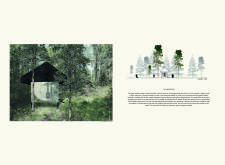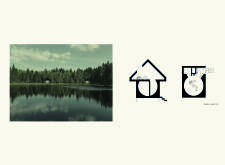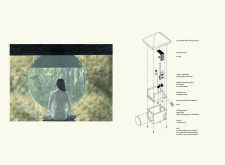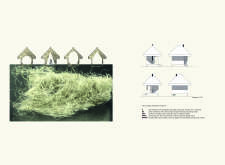5 key facts about this project
The forest meditation cabin is a thoughtfully designed retreat located in Latvia, a country renowned for its ecological practices and rich cultural traditions. Designed for reflection and mindfulness, the cabin seeks to blend with its surroundings while showcasing local materials and craftsmanship. The main idea behind the design is to create a small, functional space that enhances the connection between its users and nature.
Spatial Configuration
The cabin has an open interior layout that allows natural light to flood in, creating a calm atmosphere ideal for meditation. Covering 15 square meters, the design makes efficient use of its limited space, incorporating a loft area that utilizes vertical height while maintaining privacy. This arrangement encourages easy movement throughout the cabin, making it a versatile area for various activities while preserving a cozy feel.
Material Selection
Linen/flax is the primary material used in the construction of the cabin, emphasizing local resources and heritage. This material is chosen not only for its sustainability but also for its excellent insulation properties. The cabin remains comfortable throughout the year, and the tactile quality of linen promotes relaxation and a peaceful environment. This focus on material helps achieve the project’s goal of creating a tranquil place for visitors.
Sustainable Features
The cabin incorporates sustainable practices into its design and function. A wood stove provides warmth during colder months, ensuring comfort. Additionally, a bicycle-based energy generation system offers an alternative electricity source, promoting independence and environmental awareness. Areas for food and water storage further enhance the cabin's practicality, allowing visitors to enjoy longer retreats without relying on outside resources.
Design Details
A notable aspect of the cabin is its elevation on stilts, which protects the surrounding landscape and maintains the natural flow of water. Furthermore, a roundel feature provides views of the forest, linking the interior space with the outdoors. These design choices help create a place that not only serves the need for a meditation retreat but also upholds principles of mindful and responsible architecture.






















































